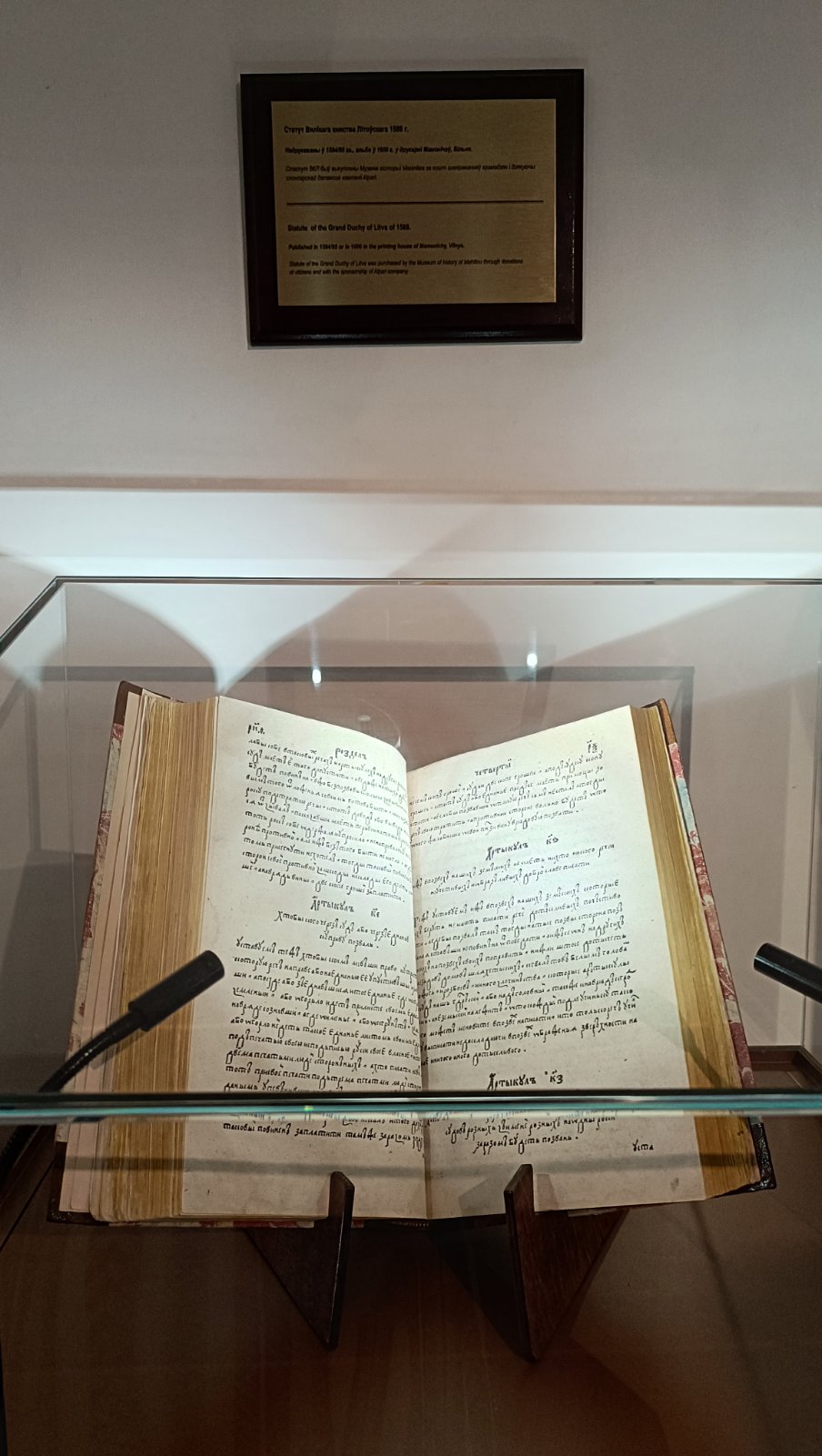Statute of the Grand Duchy of Lithuania, Psalter and Women’s Newspaper: the director of the Zonal State Archive in Molodechno during a trade union tourist trip got acquainted with valuable historical documents
As part of the trade union excursion, the director of the Zonal State Archive in Molodechno, Inna Pudakevich, visited the Mogilev and Gomel regions. During the tourist program, I visited iconic and interesting places in the regions: the memorial complex «Monument to the Children Victims of the Great Patriotic War of 1941-1945», the Kozel-Poklevskikh estate, the Bulgakov Palace in Zhilichy, the Buynichi Field, the Mogilev City Hall and in other objects. In some of them, documents of historical value were offered to the attention of tourists.
Thus, in the main building of the city of Mogilev, Inna Zenonovna was able to get acquainted with the Statute of the Grand Duchy of Lithuania of 1588, printed around 1594 in Old Russian in the Mamonichi printing house (Vilnius). The book is rectangular in shape, there are watermarks, small tears, and dirt. Pages 1-16 are missing, the first sheets have been restored, some of the pages have water stains. The cover of the book is of a later date, trimmed with colored paper. The spine is embossed in gold: «STATUTE of Lithuania», as well as an ornament. The Statute is the highest legislative act of the Grand Duchy of Lithuania, Russia and Zhemoytka, the predecessor of European Constitutions. The copy was acquired in 2012 through private donations from citizens and sponsorship. Religious writings are also presented, for example, the book “The Apostle”, printed by the pioneer Mogilev printer Spiridon Sobol in 1632 in Kuteino or Buinichi. Acquired by the museum using budget funding in 2017.
The excursionists also became acquainted with secular periodicals. For example, at the Kozel-Poklevskikh estate, a French Women’s newspaper dated 1901 was presented. From it, Belarusian girls from high society learned about fashion trends, became acquainted with literary works from different countries and the visual works of European artists, followed the chronicle of the day and more.
The director of the zonal archive was interested in both the content of all printed exhibits presented and the conditions for their storage and use.
For centuries, the memorial in «Children’s Khatyn», as the complex «Monument to Children Victims of the Great Patriotic War of 1941-1945» is popularly called, will preserve the history of paper media with tragic truth. Here the text of the dying letter-testament of 15-year-old girl Katya Susanina to her father is immortalized on a concrete school board. The message was found when they were dismantling the brickwork of a destroyed stove in one of the houses in the liberated regional center of Liozno, in the Vitebsk region. The address on the envelope read: «Active army. Field mail No…. to Susanin Peter». In Liozno, this girl was enslaved by an important occupier and on March 12, 1943, on her fifteenth birthday, no longer able to endure the abuse, she committed suicide. Before this, she wrote a letter to her father, who was at the front. The letter was found in 1944. It never reached the recipient.
– Documents are an integral part of the historical and cultural heritage of peoples. They store information about the past, losses and achievements of societies, preserve memory and help pass on knowledge and historical experience to future generations, noted Inna Pudakevich.
 |
| Delegation of the Molodechno district organization of the Belarusian trade union of workers of state and other institutions at the City Hall of Mogilev |
 |
| Fragment of the exhibition in the Mogilev Town Hall |
 |
| Fragment of the exhibition in the Mogilev Town Hall |
 |
| Statute of the Grand Duchy of Lithuania in 1588 |
 |
| Women’s newspaper of 1901, presented at the Kozel – Poklevskikh estate |
 |
| Fragment of the Women’s newspaper of 1901, presented in the Kozel – Poklevskikh estate |

